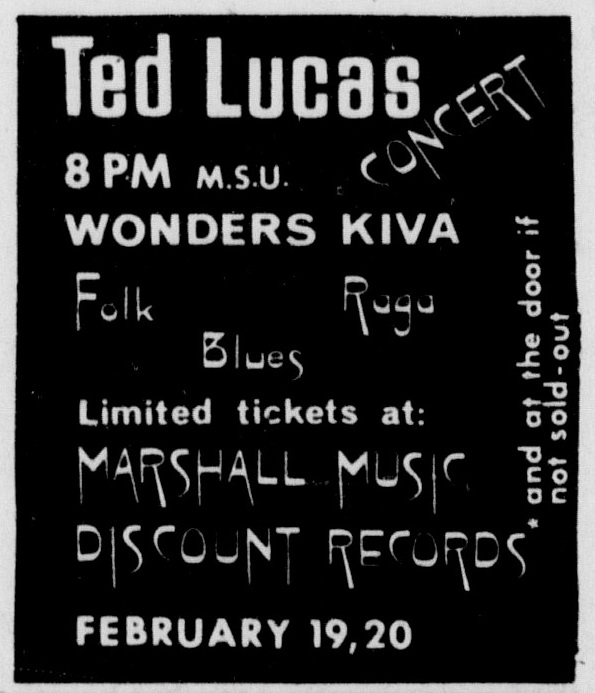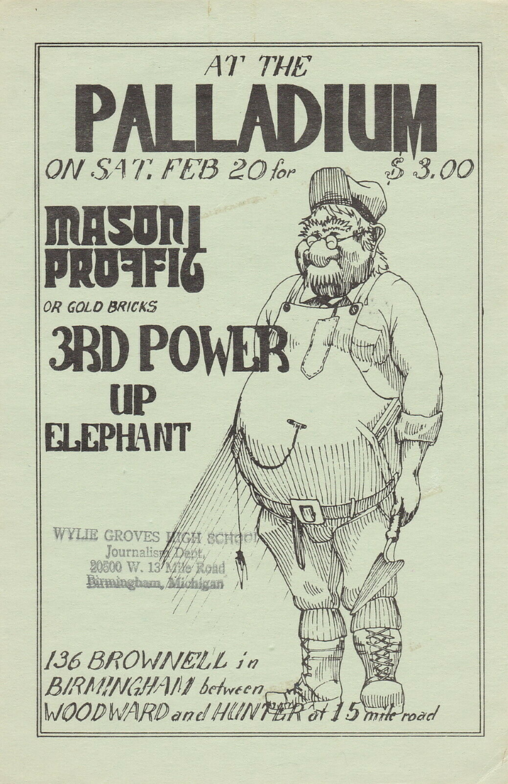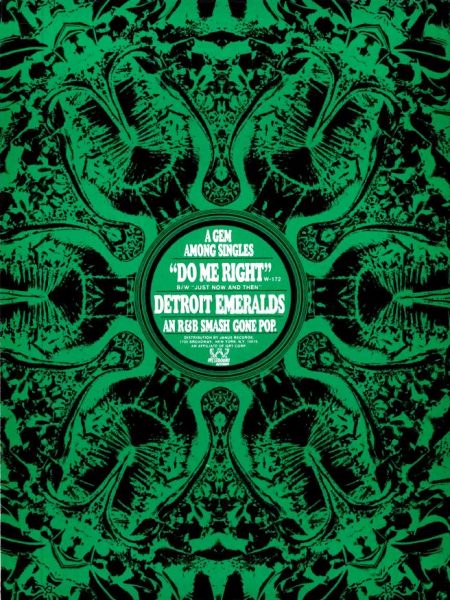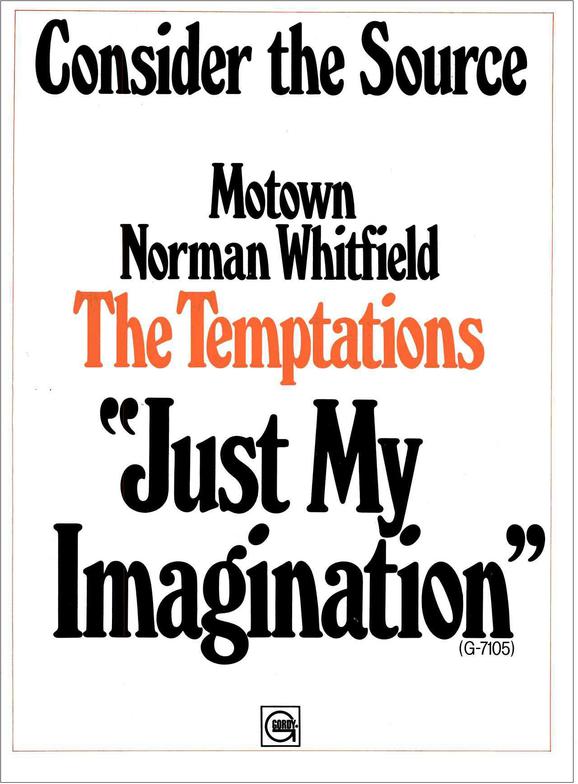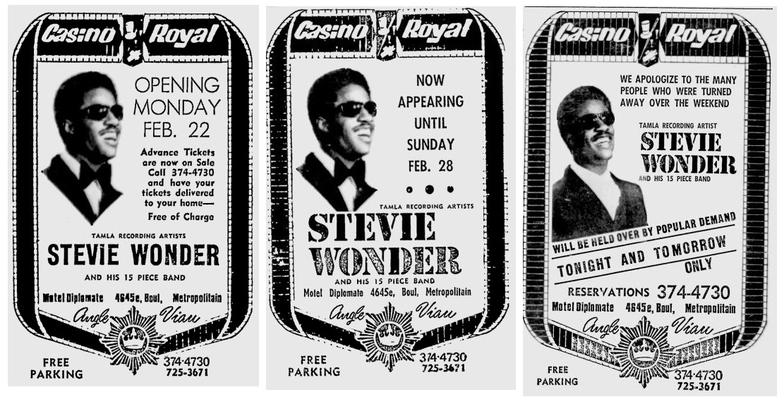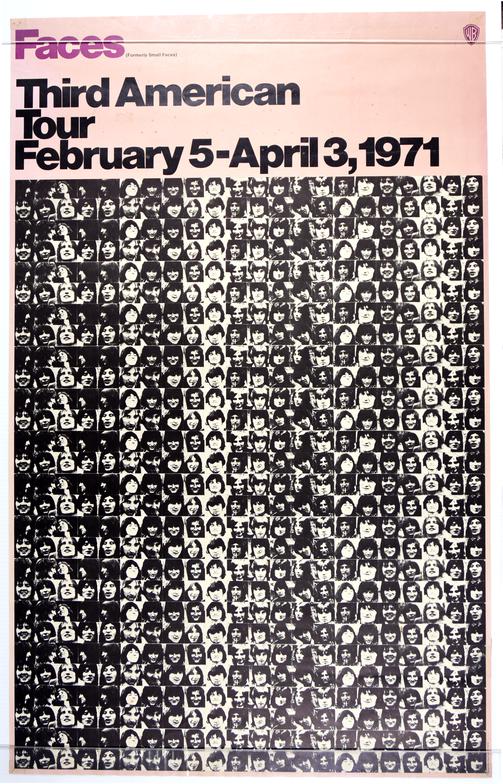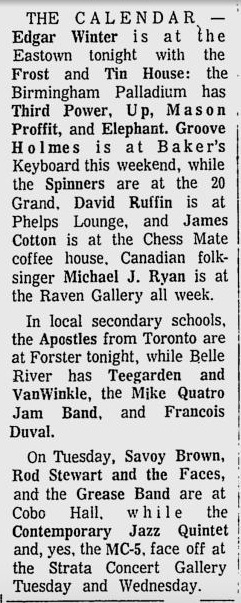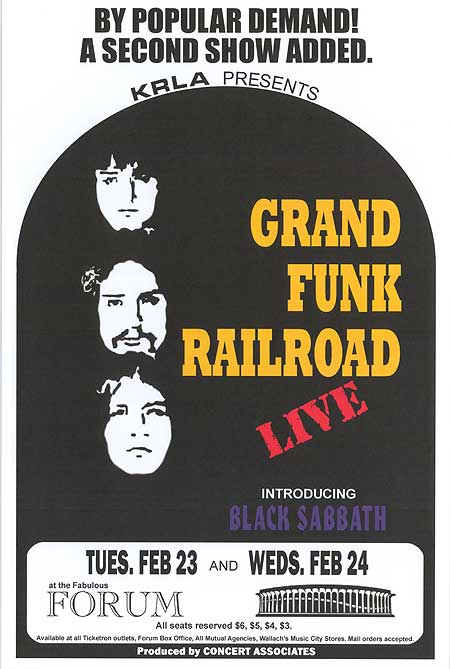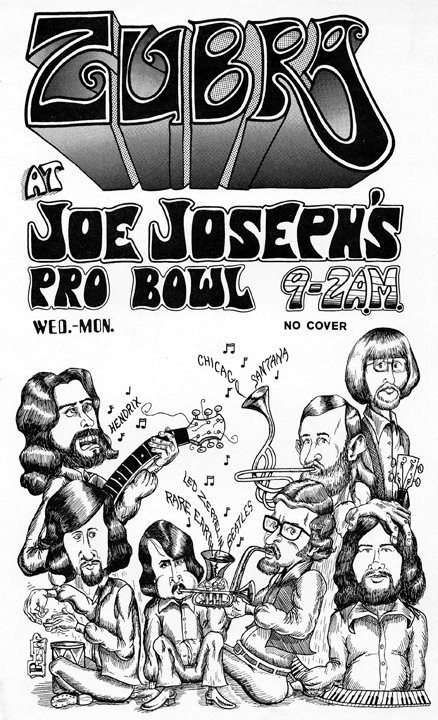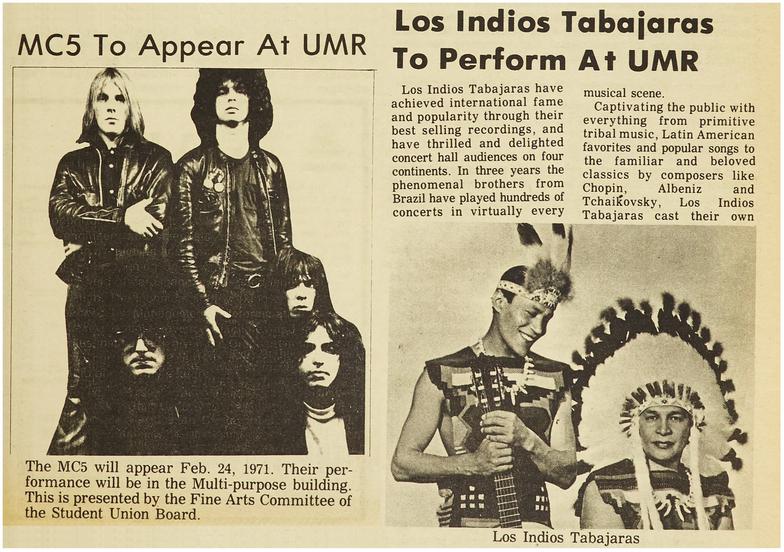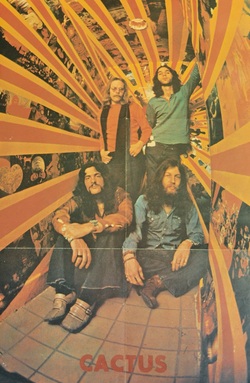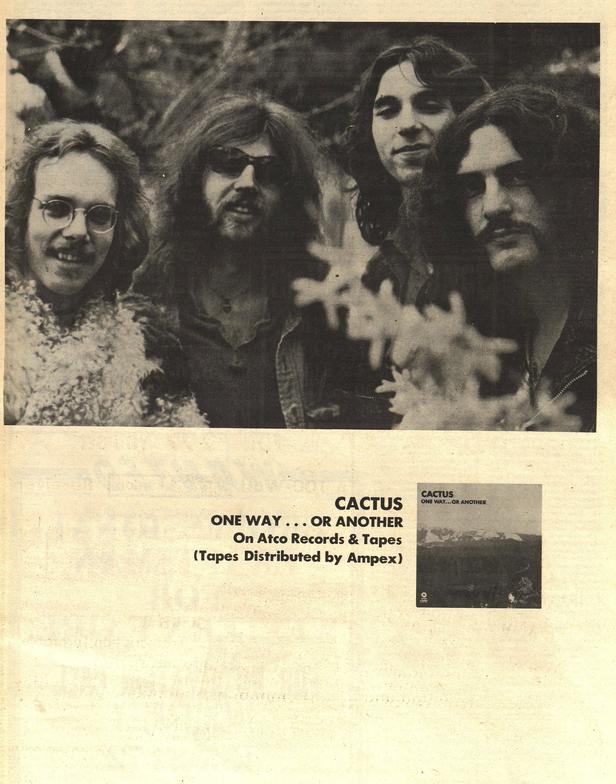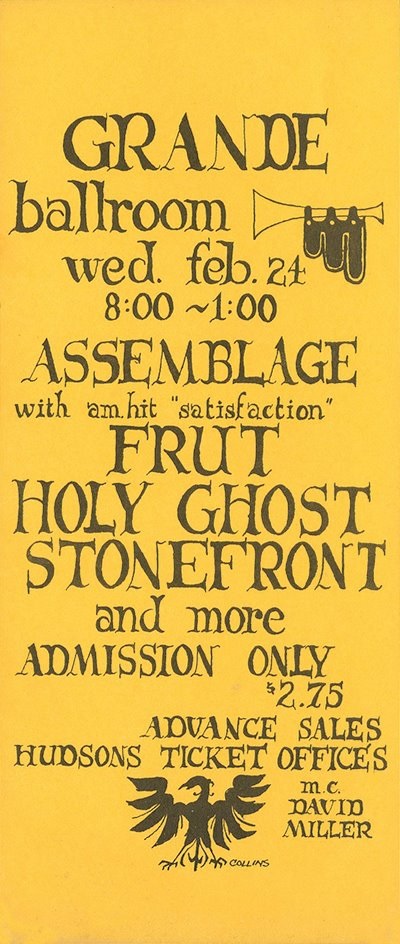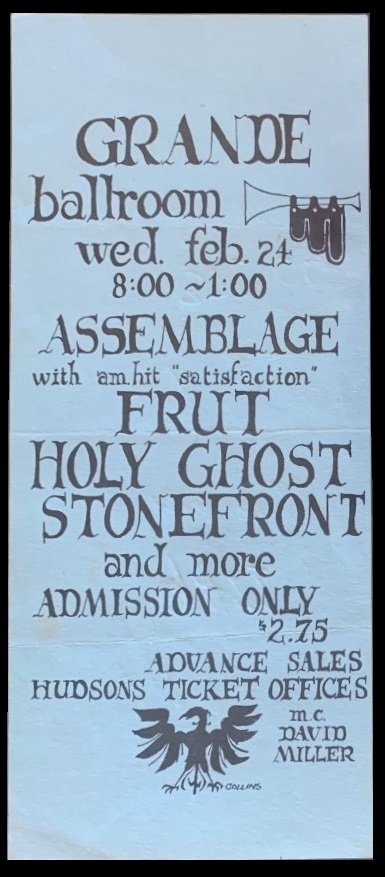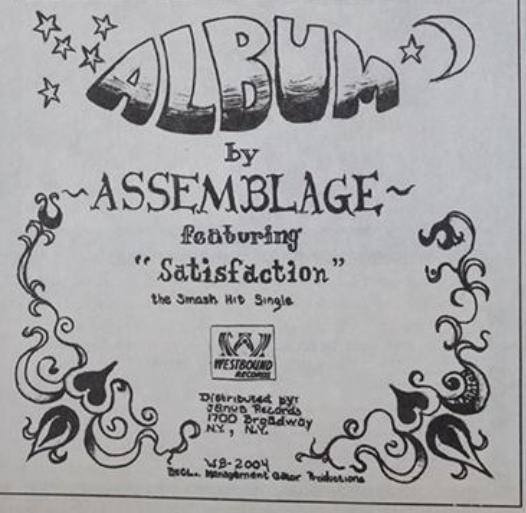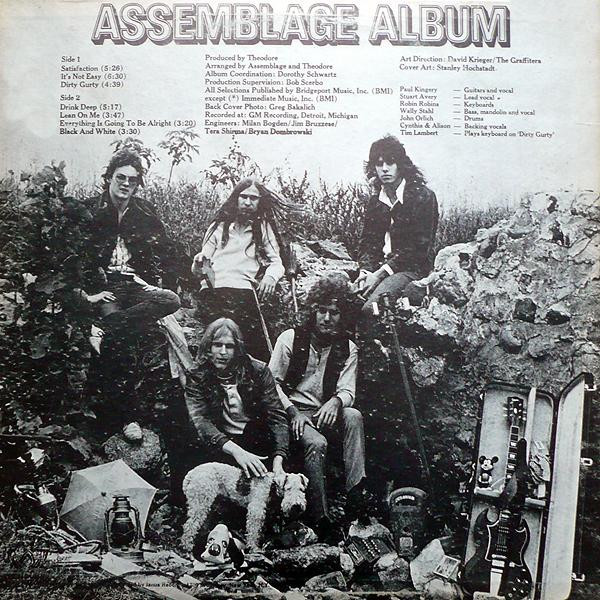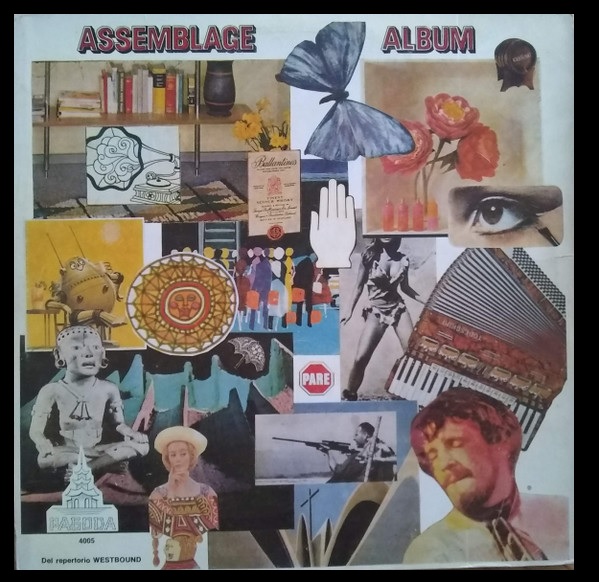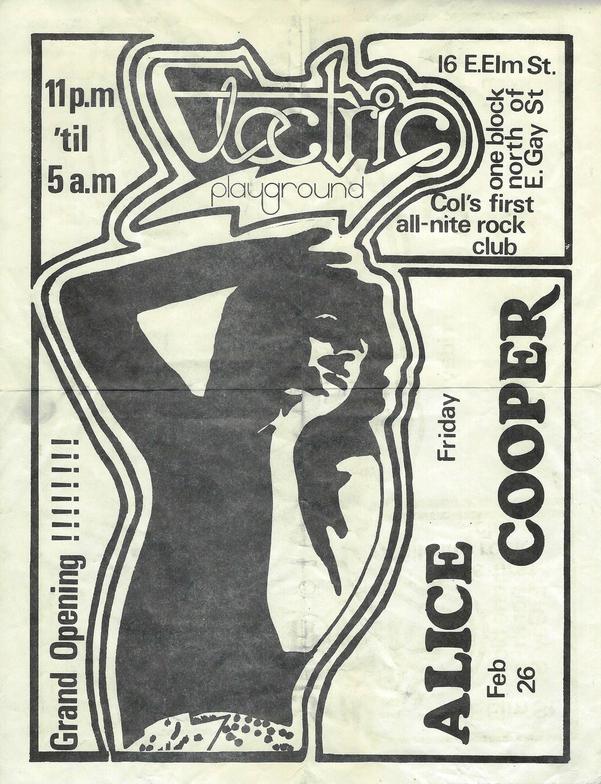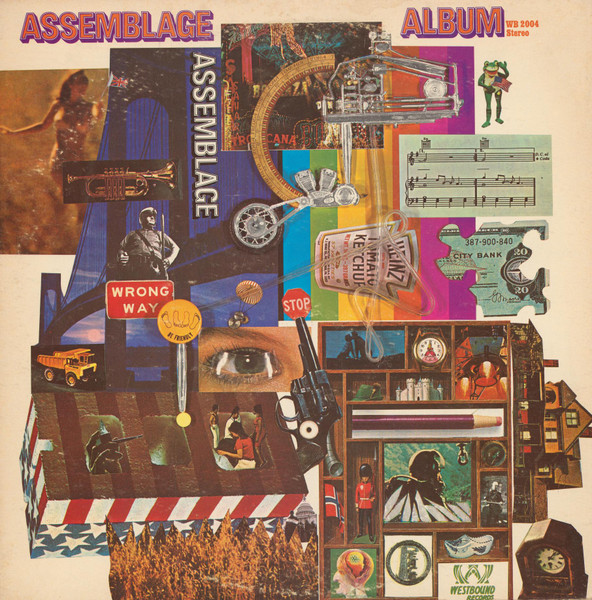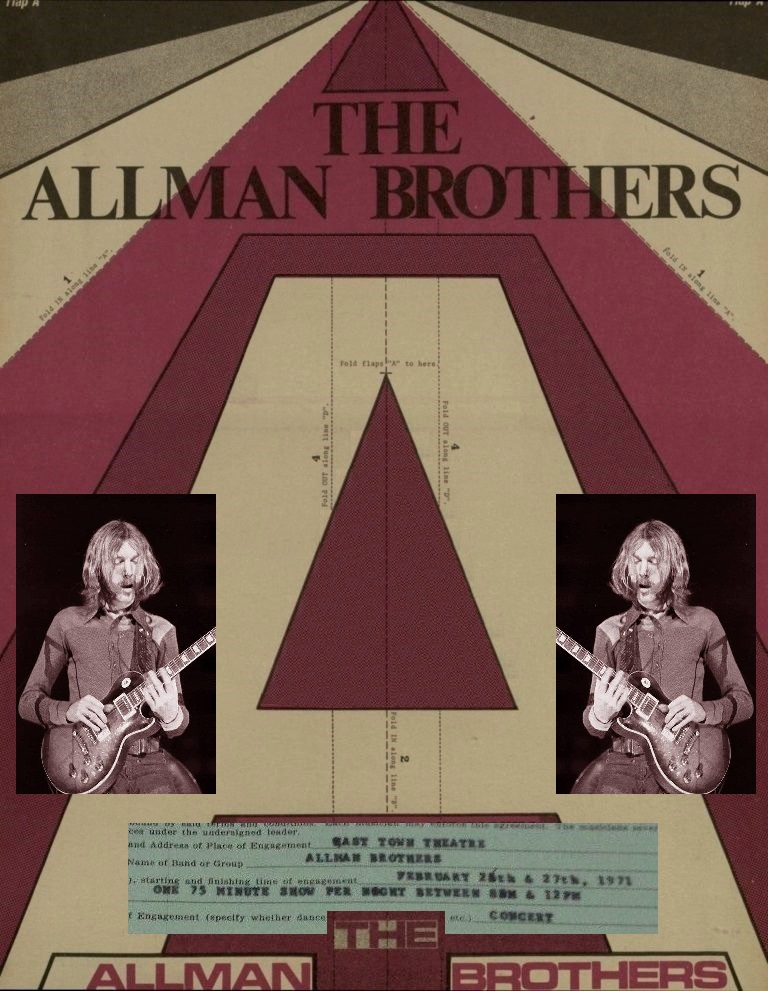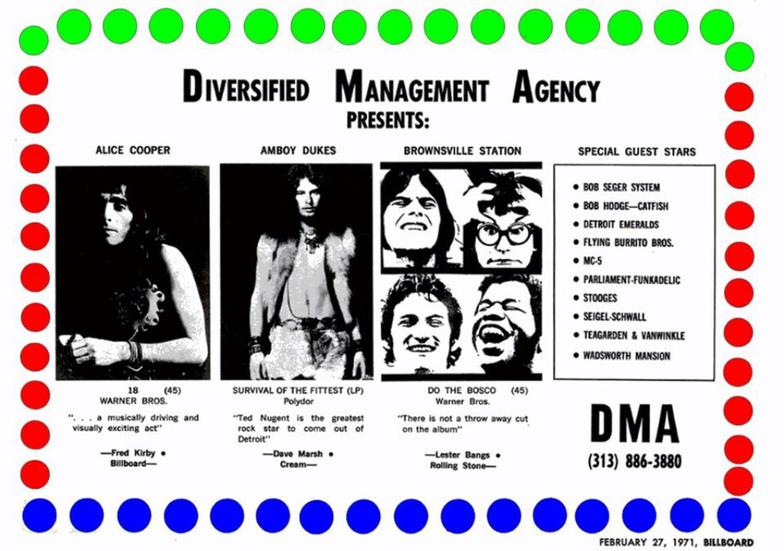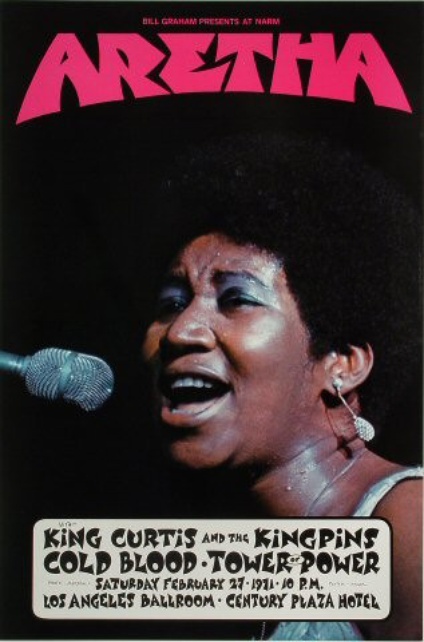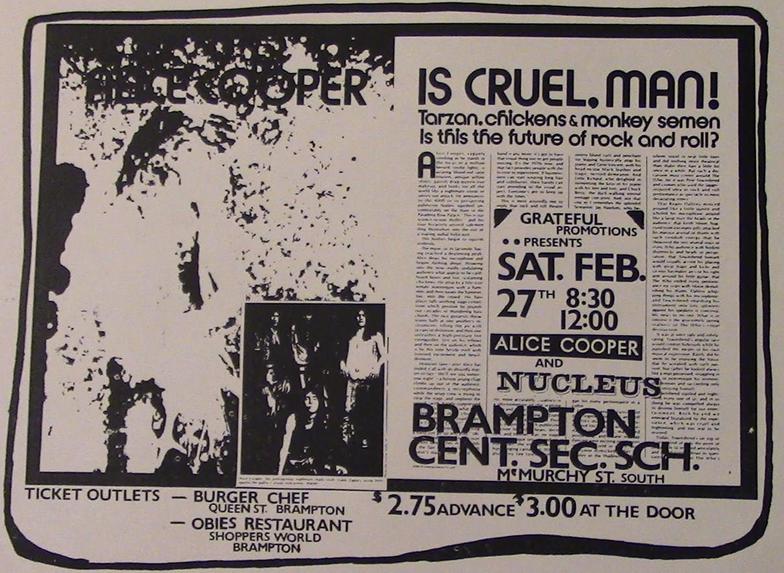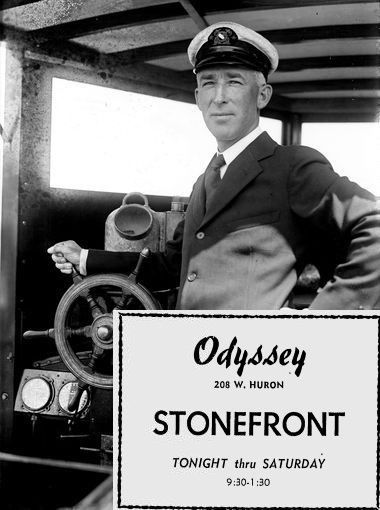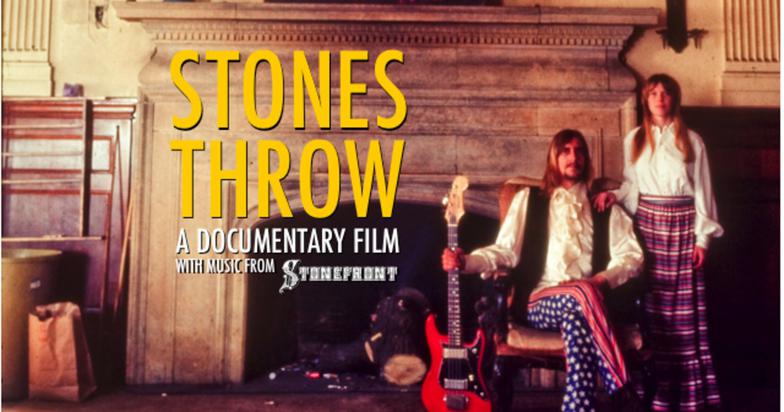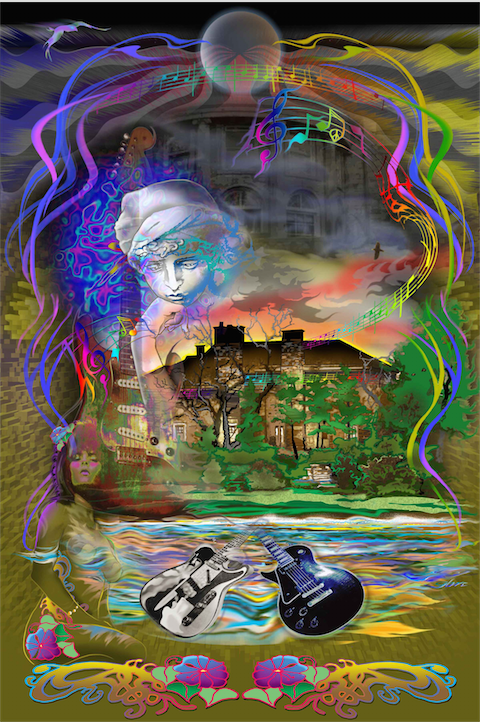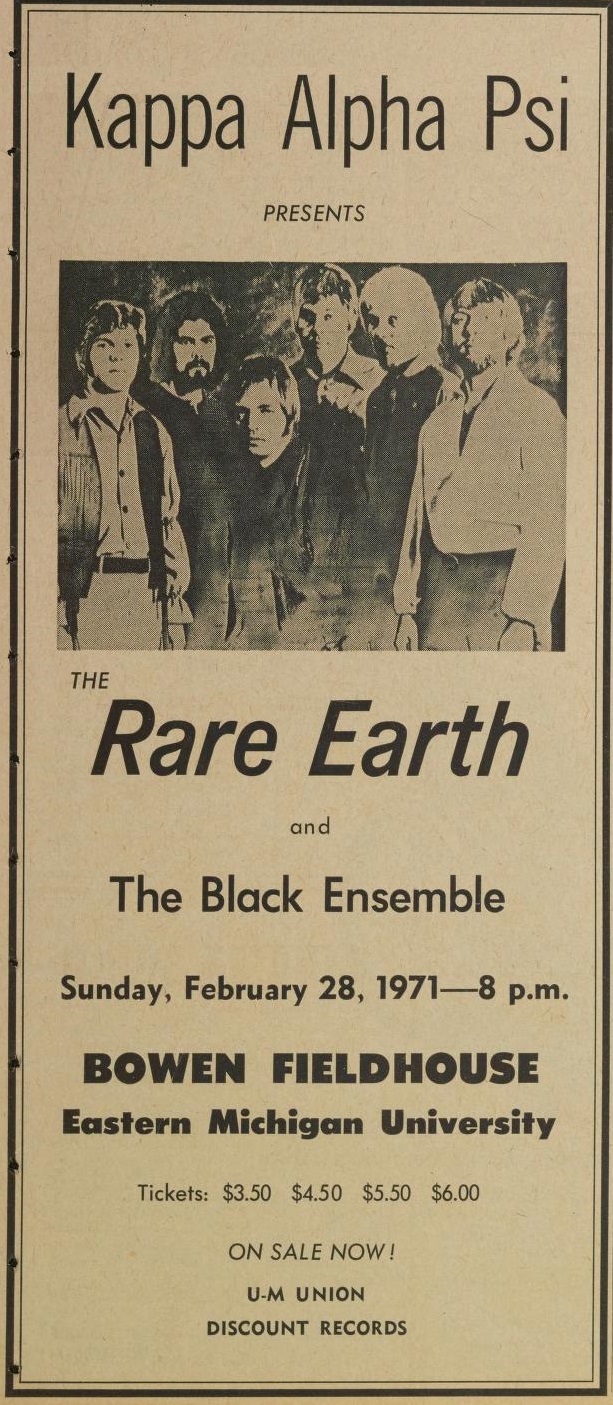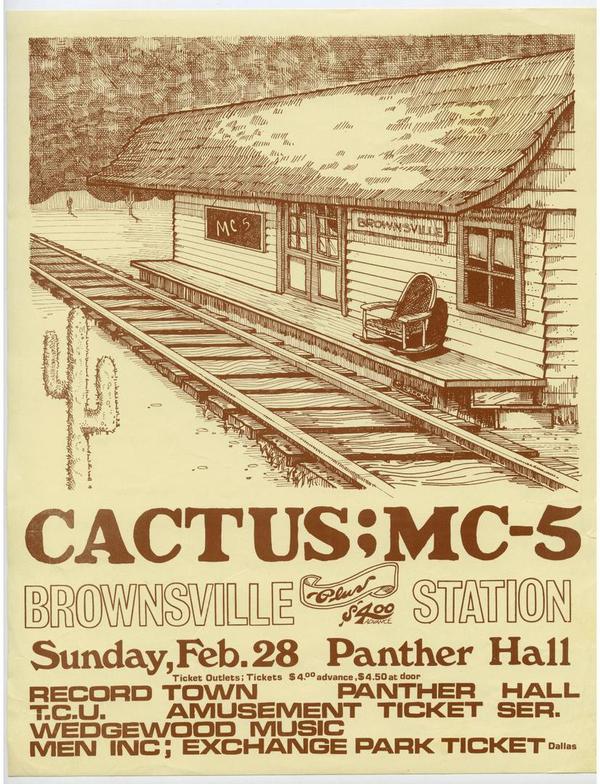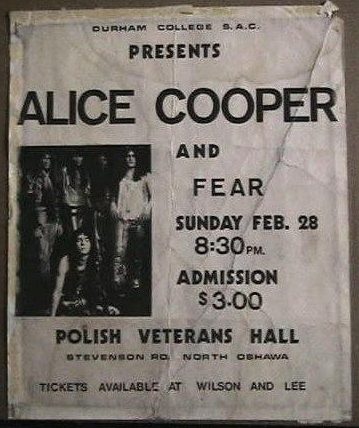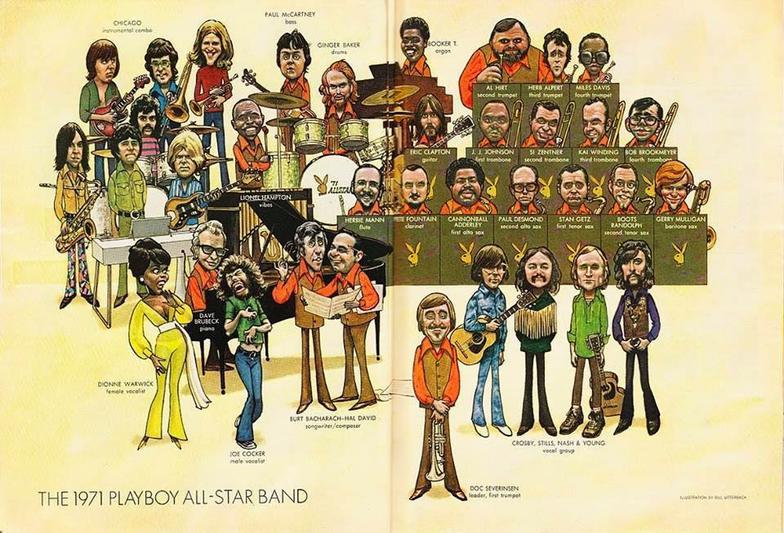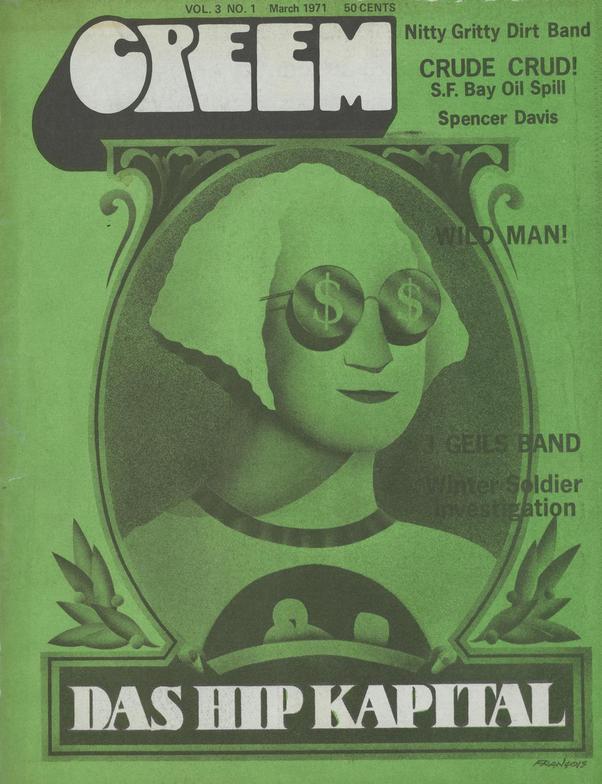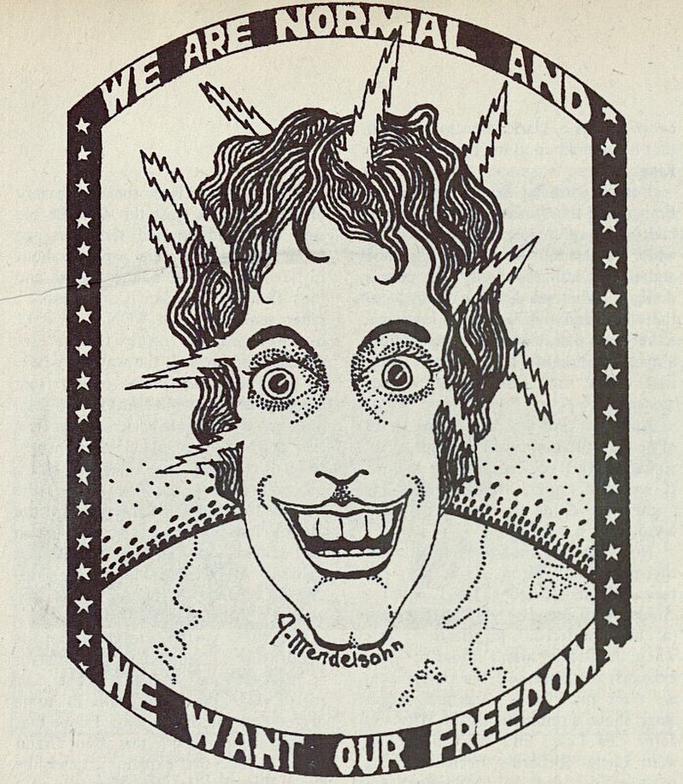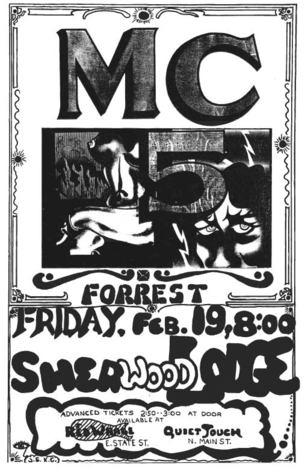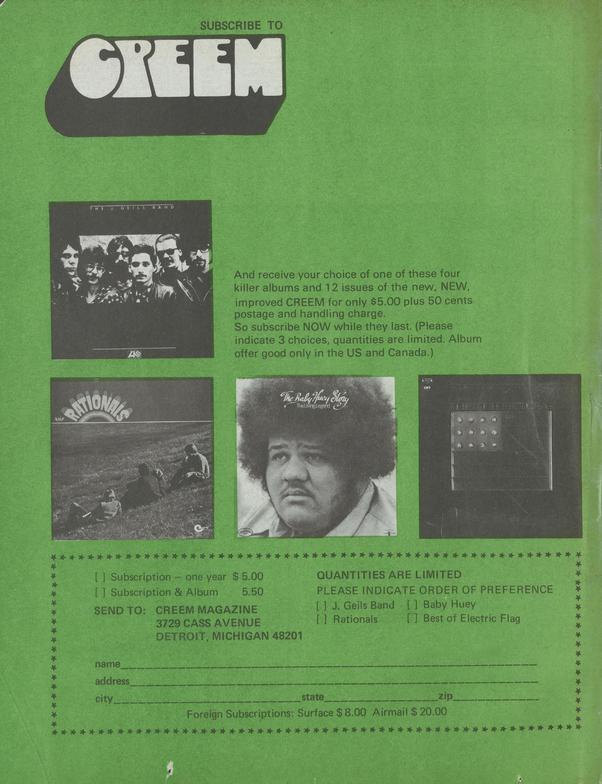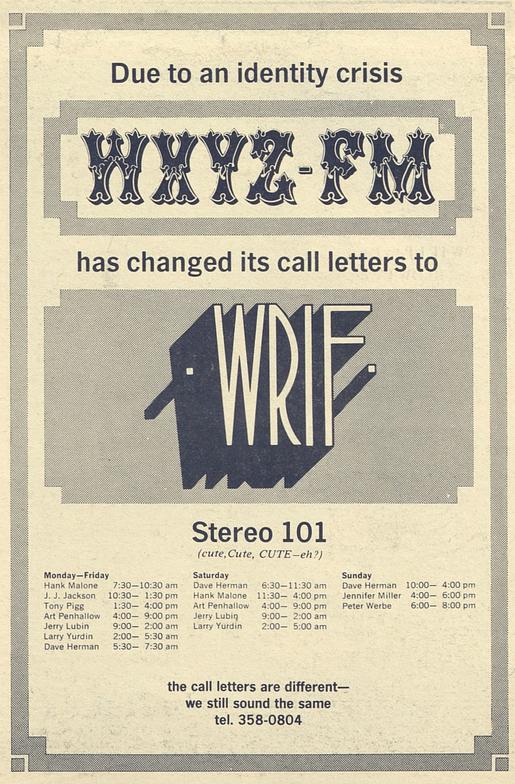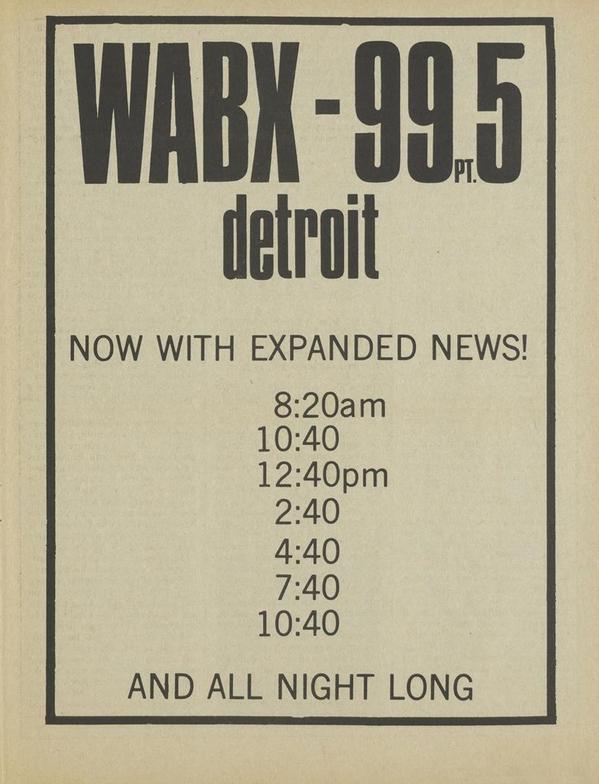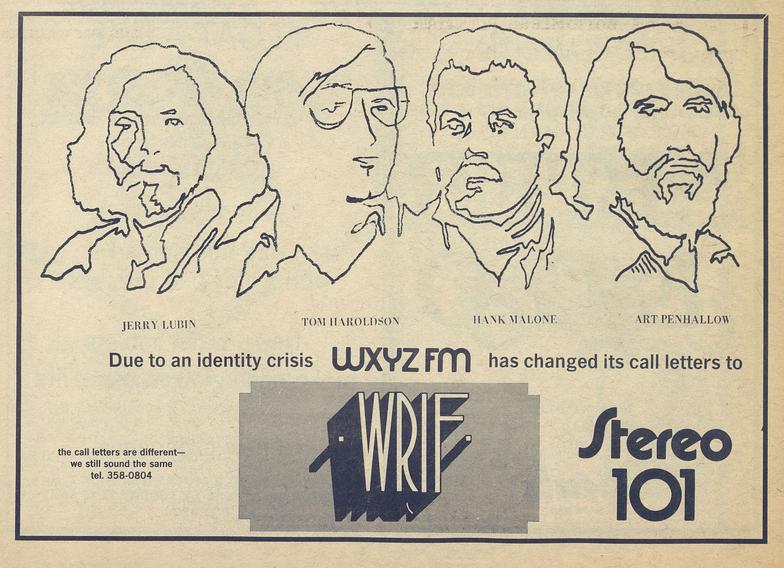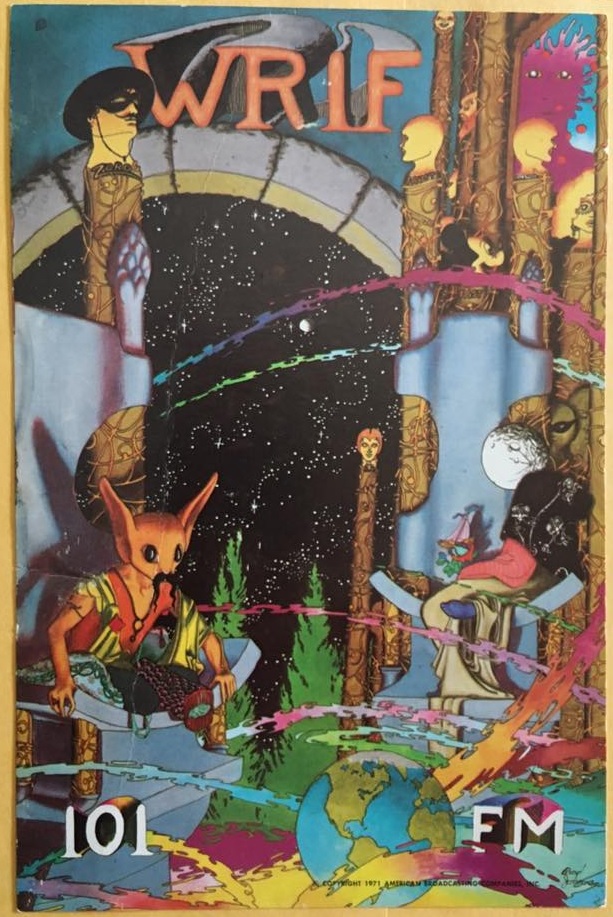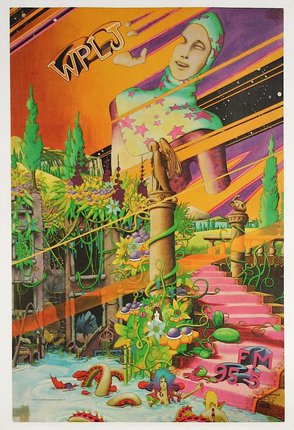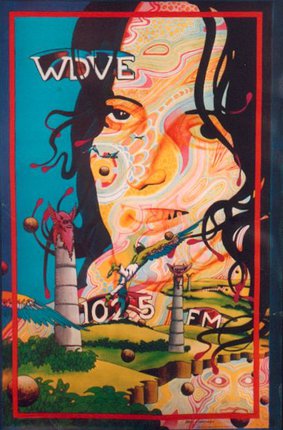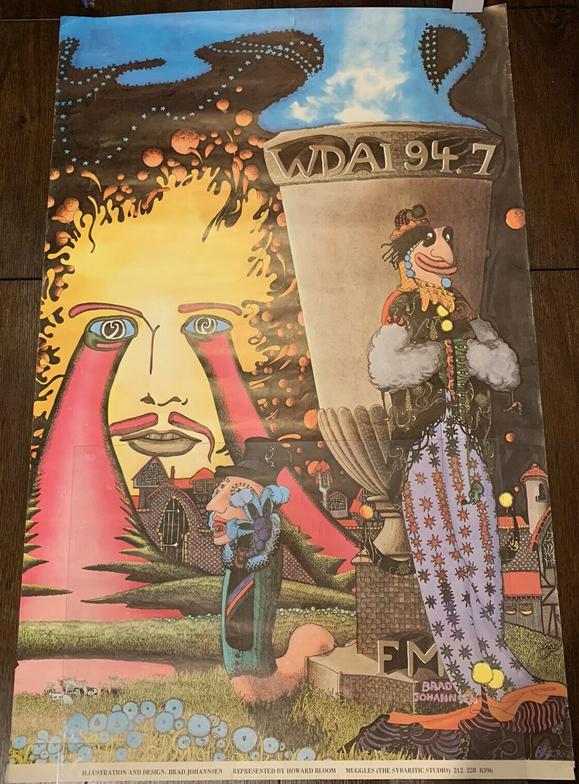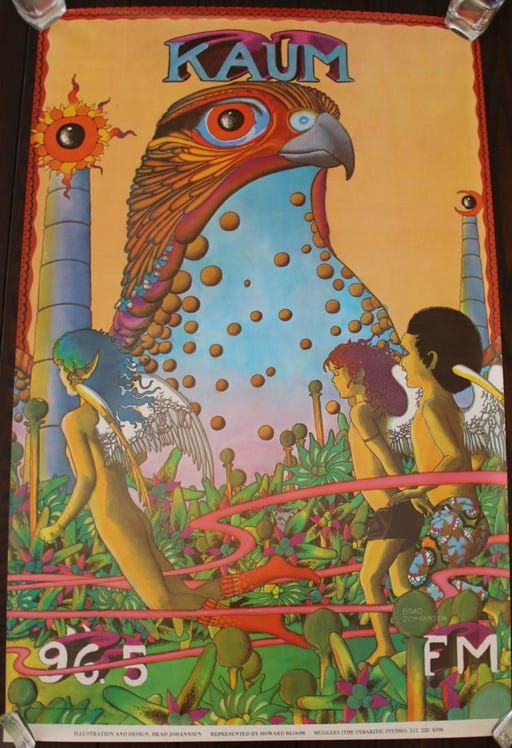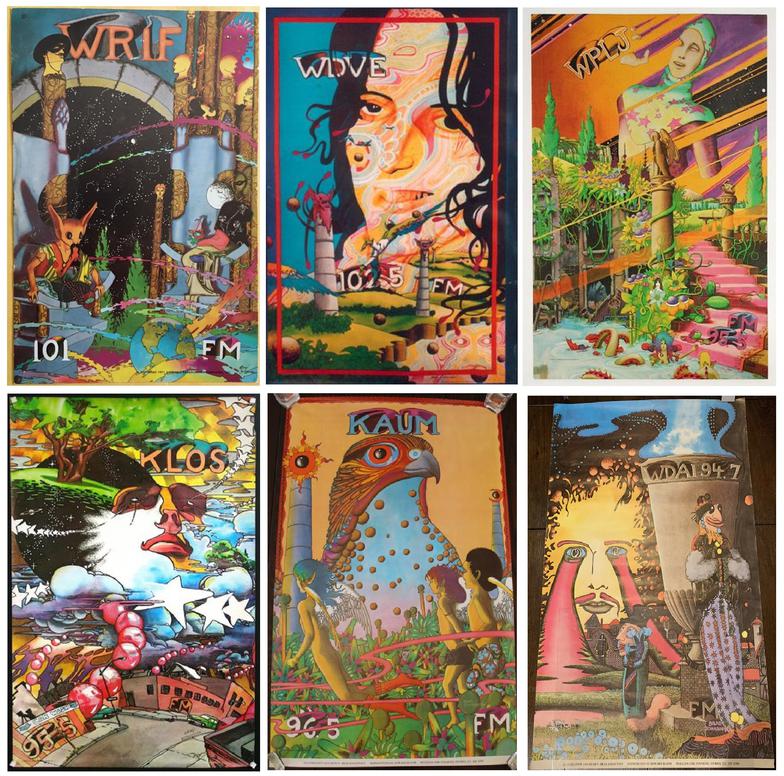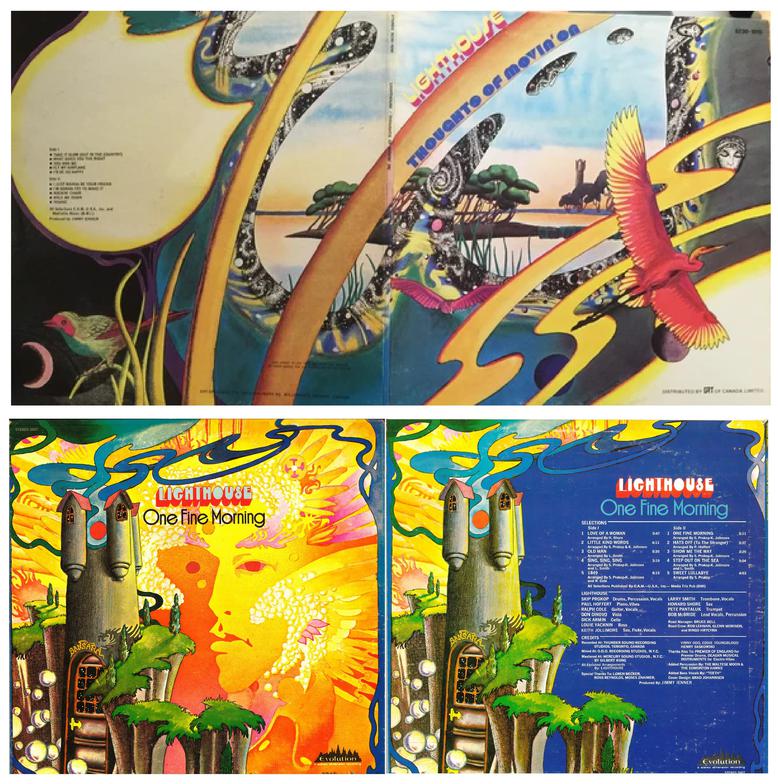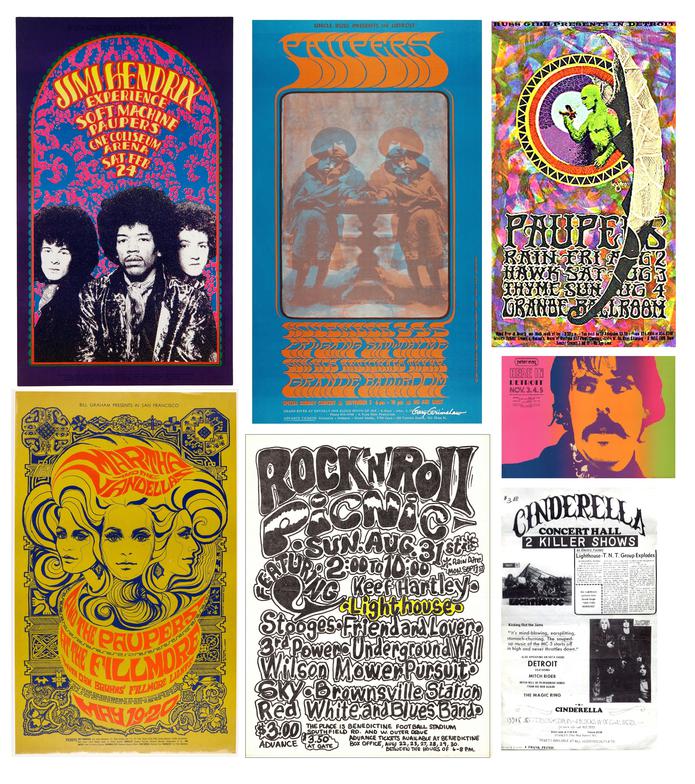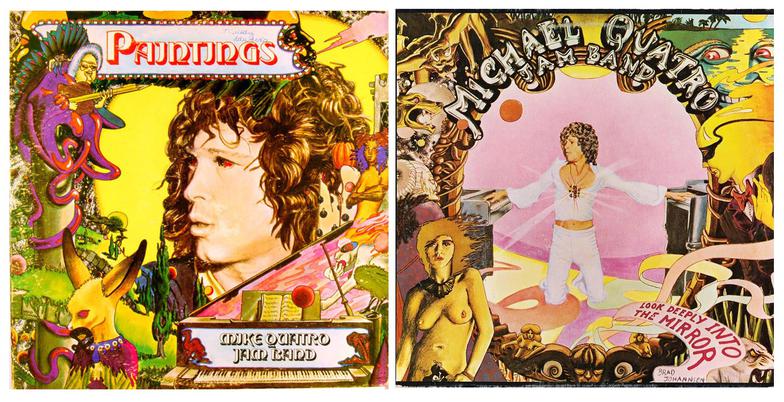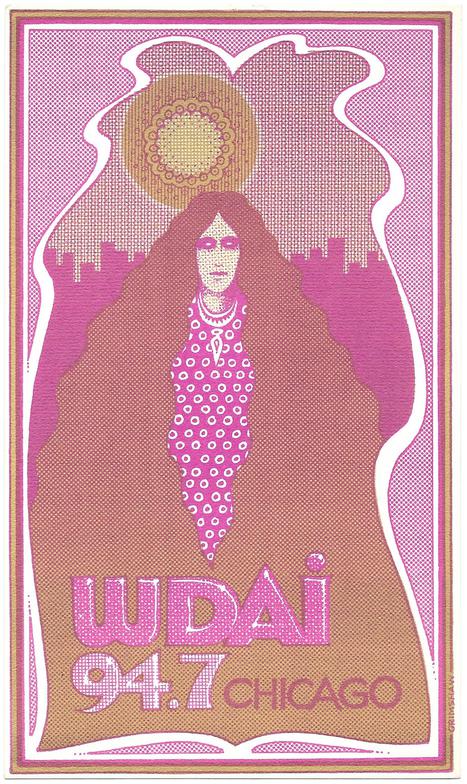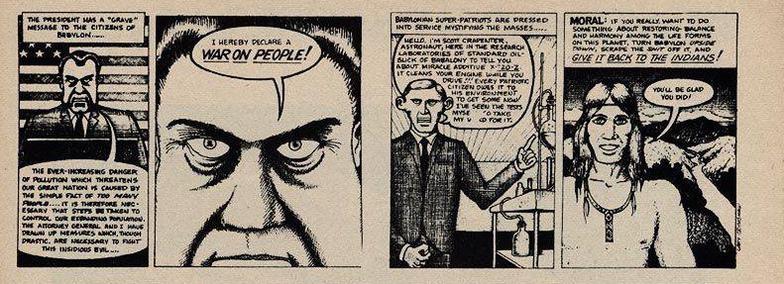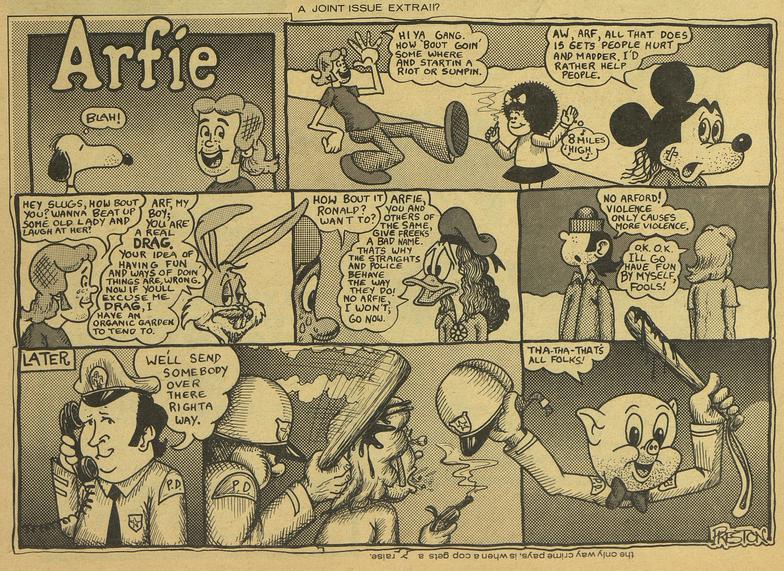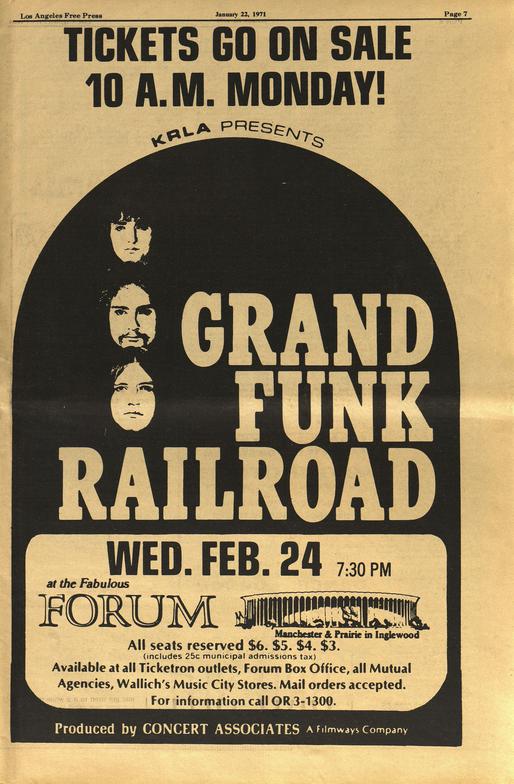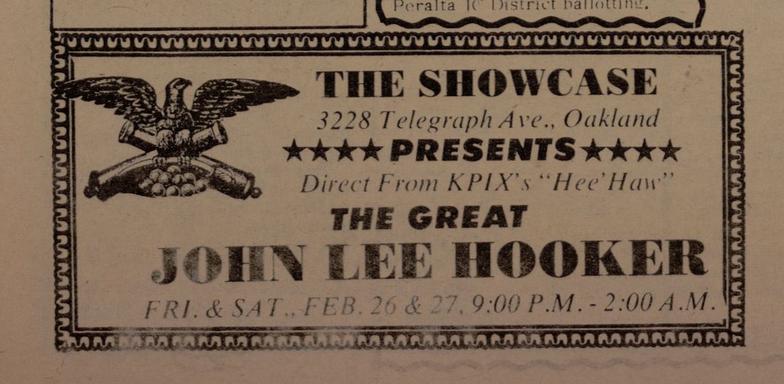Splatt Gallery
Double click here to add text.
Splatt Gallery's History of Michigan Concert Posters
Volume Seven - 1971 - Page Three
***********************************************************
Ad for an appearance by Ted Lucas at the Wonders Kiva in East Lansing, Michigan, February 19-20, 1971.
Poster/handbill by Chad Hines for the Palladium in Birmingham, Michigan, February 20, 1971. Bands were Mason Proffit, Third Power, UP, and Elephant.
A full-page Westbound Records ad in the February 20, 1971 issue of Billboard magazine for the title track of the first album from the Detroit Emeralds.
The Detroit Emeralds – Do Me Right (1971)
https://www.youtube.com/watch?v=zYziZMx8Qvk
A full-page Motown Records ad, with the Gordy label, in the February 20, 1971 issue of Billboard magazine for the single “Just My Imagination” by the Temptations.
A series of posters/ads for Stevie Wonder at the Casino Royal in Montreal, Quebec, Canada for an engagement that began on February 22, 1971, was extended through February 28th, and had two more final nights added for March 1st and 2nd.
Gary Grimshaw’s illustration from the “Goose Lake Gags” comic book being used to sell the Wolverine ’71 Yearbook, available during “Wolverine Week”, February 22-27, 1971, at Michigan State University in East Lansing.
Tour poster for the Faces’ Third American Tour which included a show at Cobo Arena in Detroit, Michigan on February 23, 1971, supported by Savoy Brown and the Grease Band. Also of note in the events calendar is Edgar Winter with Frost and Tin House at the Eastown, David Ruffin at Phelps Lounge, two high school concerts with the Apostles from Toronto at one and Teegarden & Van Winkle, Mike Quatro Jam Band, and Francois Duval at the other.
And finally, an interesting match-up of the Contemporary Jazz Quintet with the MC5 at Strata Concert Gallery.
Grand Funk Railroad kicked off a 38-show tour with these two nights at The Forum in Inglewood, California, February 23-24, 1971. It was expected that the tour, which would include two nights at Cobo Arena in Detroit at the end of April, would gross over $10 million.
Poster by Dennis Preston for Zubra at Joe Joseph’s Pro Bowl in Lansing, Michigan, February 24, 1971 through March 1st.
An ad in The Missouri Miner, the campus newspaper of the University of Missouri in Rolla, Missouri, for an appearance by the MC5 on February 24, 1971. Also shown as coming to UMR, just a few days earlier, is the guitar duo of two brothers known as Los Indios Tabajaras, seen in action in the link below:
https://www.youtube.com/watch?v=Onz_iGTLpeI
A poster that came with the album (those were the days), the second album by Cactus, released on February 24, 1971.
Cactus – Hometown Bust (1971)
https://www.youtube.com/watch?v=Tv31KyKbOWg
An Atco Records ad for the second album by Cactus, released on February 24, 1971.
A welcome return to semi-regular shows at the Grande Ballroom, after being closed for nearly the entire year of 1970, this show on February 24, 1971, was its third show in the past eight weeks. The poster, made by an unknown artist signed Collins, even gives a nod to the old trumpet flyers that Russ Gibb found, abandoned from the dancehall days, when he first laid claim to the building in 1966.
Assemblage (formerly Stuart Avery Assemblage) released their debut single, a cover of the Rolling Stone’s “Satisfaction” which we previously commended for not using the song's famous riff even once in the song.
This also seems to be the earliest poster with the band Stonefront, the house band of the infamous Garwood Mansion.
The line-up included Frut, who seemed to be everywhere at once. The band Holy Ghost, in this only appearance we have found, is the mystery band of the poster.
An illustrated Westbound Records ad for the album release by Assemblage. Here are some excerpts from our 1968 post on the Stuart Avery Assemblage for those who may have missed it the first time around:
Later, as The Assemblage, the band recorded an album in 1971 on the Westbound label. Apparently, the sessions were excruciating and the band detested the results, from the album title and cover art, to the sound which was over-produced and mutated beyond recognition from the hard rock they played in their live appearances.
In fact, it was so bad that it broke up the band. Stuart Avery worked briefly with Edgar Winter’s White Trash, then became an executive with the global tea company, The Republic of Tea, Paul Kingery formed additional bands, Stretch Thomas and Air Condo, played guitar on later Seger recordings, and became the bass player for the re-united Three Dog Night in the 80’s. Keyboardist Robyn Robins, who came to The Assemblage from the band Virgin Dawn, became part of the classic Silver Bullet Band line-up. Spencer Hirsch, the band’s third drummer, was later in the original line-up of Sirius Trixon & the Motor City Bad Boys.
John Orlich, the band’s second drummer, made a career of working in stained glass, eventually incorporating the craft into making custom glass-shelled drum kits that were used by Alan White of Yes, Tris Imboden of Chicago, and an artist formerly known as Prince.
And of course, most central to our story, the band’s original drummer James Render, left the band to pursue a career in graphics arts, and became one of our favorite poster artists. Render has recently surfaced on FB and we have about 30 new images of his posters that we had not seen before, which we will back-fill into the history.
For now, here is the second single from the Assemblage album:
Assemblage – Everything is Going to be Alright (1971)
https://www.dailymotion.com/video/x11190b
Here is the cover art for Assemblage’s Album. As noted above the band hated the album title and cover art, and would have preferred the album title of “Guts” spelled out in a drawing of intestines.
Assemblage – Album (1971)
https://www.dailymotion.com/video/x6vdvqo
A different collage on the Argentina release of the Assemblage album.
Poster for the Grand Opening of the Electric Playground in Columbus, Ohio with Alice Cooper on February 26, 1971.
Previously, we concluded that a November 1970 date for the Allman Brothers’ Michigan debut likely did not occur. The next earliest date is February 26-27, 1971 at the Eastown Theater in Detroit, a booking contract, partially shown above, is some of the scant documentation of these shows (ie, no posters).
We do know for certain that the Allman Brothers performed at the upcoming 2nd Detroit Rock & Roll Revival at the Michigan State Fairgrounds on May 30, 1971 as they are mentioned in a show review.
Following that, it appears that the Allman Brothers returned to the Eastown for two shows, June 11-12, 1971.
These five shows would have comprised all of guitarist Duane Allman’s Michigan appearances, he was killed in a motorcycle accident on October 29, 1971 at age 24.
Once again, if you missed it previously, here is a link to an extremely comprehensive life history of Duane Allman:
https://www.duaneallman.info/chronologypart1.htm
An ad in the February 27, 1971 issue of Billboard magazine for Dave Leone’s Diversified Management Agency. Their three main acts were Alice Cooper, Amboy Dukes, and Brownsville Station, while “guest star” status was afforded to Bob Seger, Bob Hodge, Detroit Emeralds, MC5, Parliament-Funkadelic, Stooges, Teegarden & Van Winkle, and non-Michigan acts Flying Burrito Brothers, Seigel-Schwall, and New Jersey’s Wadsworth Mansion.
Brownsville Station – Do the Bosco (1970)
https://www.youtube.com/watch?v=KsVZrAmCw-8
Poster for Aretha Franklin at the Century Plaza Hotel in Los Angeles, California, February 27, 1971.
Newspaper ad in the form of a newspaper story for Alice Cooper in Brampton, Ontario, Canada on February 27, 1971.
Garfield Arthur “Gar” Wood was a rock star of the Roaring Twenties, a prolific inventor whose inventions included the hydraulic lift and the modern-day garbage truck, and made him fabulously wealthy, with a daredevil streak that manifested in his love of racing boats leading to world speed records and the creation of Champions Day. He purchase property on the tip of Grayhaven Island on the Detroit River and constructed a mansion that, among its many magnificent features, include a pipe organ integrated into all four floors of the house.
Wood sold the house in 1955 and moved to Florida, and the house remained vacant until 1969 when it became occupied by a group of young professionals. One member of the group, Mark Hoover, began hosting parties to raise money for the monthly rent, which eventually drove his more staid roommates away, to be replaced by more adventurous ones, including the band Stonefront, led by guitarist Larry Merryman.
The parties evolved from being monthly affairs to being nightly events, attracting visiting musicians following their gigs at the Grande Ballroom and the Eastown Theater to post-show parties. Johnny Winter memorably performed the song “Let It Be” on the house pipe organ, Leon Russell allegedly recorded a set of music at the house, and other famous visitors included Iron Butterfly, Van Morrison, Alvin Lee, Mountain and others, as well as local regulars Ted Nugent, Cactus, Alice Cooper, and Teegarden & Van Winkle.
Stonefront played a series of nights at the Odyssey in Ann Arbor, Michigan, February 25-27, 1971. Here’s song by Larry Merryman commemorating the days of the Garwood Mansion:
Larry Merryman – Garwood Party Song
https://www.youtube.com/watch?v=4dRyCteY4eI
A documentary movie about the Garwood Mansion was in the works, but apparently never completed. You can see a trailer here:
https://www.indiegogo.com/projects/just-a-stones-throw-away-finishing-the-film#/
Poster by an unknown artist in tribute to the Garwood Mansion.
Rare Earth at Bowen Fieldhouse in Ypsilanti, Michigan, February 28, 1971. The band would release its fourth album in June 1971, and a live album at the end of the year.
Nice incorporation of the band names, the MC5, Cactus, and Brownsville Station, in the illustration on this poster, by an unknown artist, for this show in Fort Worth, Texas, February 28, 1971.
Poster for Alice Cooper in Oshawa, Ontario, Canada on February 28, 1971.
The February 1971 edition of Playboy magazine’s annual All-Star Band, once again illustrated by Bill Utterback. For the first time since 1964, Henry Mancini was no longer the band leader, he was replaced by Doc Severinsen, who also kept his place in the horn section as well.
Eric Clapton replaced Jimi Hendrix on guitar, Dionne Warwick replaced Janis Joplin for female vocalist and Joe Cocker replaced Tom Jones as male vocalist. The band Chicago replaced Blood, Sweat & Tears for Instrumental Combo, Crosby, Stills, Nash & Young replaced the Beatles for vocal group, and Burt Bacharach & Hal David replaced Lennon & McCartney for songwriter. A new category was added for the flute, going to Herbie Mann, and thankfully, the category of Sitar was dropped.
The horn section remained unchanged from the year before, in fact, other than some jockeying in the trumpets, the four(!) trombones, the five saxophones and the clarinet had not changed since 1965.
The front and back covers of the March 1971 issue of CREEM magazine, which had a new format following a two-month hiatus. Cover illustration by Francois Robert.
Illustration by John Mendelsohn in the March 1971 issue of CREEM magazine for a new feature called “We Are Normal and We Want Our Freedom” written by Mendelsohn which ran for four or five issues.
Very cool poster for the MC5 at Sherwood Lodge in Loves Park, Illinois (not to be confused with Sherwood Forrest in Davidson, Michigan), February 19, 1971.
Full-page ads in the March 1971 issue of CREEM magazine from the two major FM rock radio stations in Detroit, WABX, and the news breaking change of call letters from WXYZ to WRIF.
An ad for the newly christened WRIF-FM radio staion in Detroit, March 1971, with the charter list of DJ's, Jerry Lubin, Tom Haroldson, Hank Malone, and Arthur Penhallow.
A fantastic color drawing by artist Brad Johannsen for the new WRIF 101-FM radio station in Detroit, Michigan, in March 1971.
You may recognize the artwork of Brad Johannsen, on this poster for radio station WPLJ-FM in New York City, from the similar poster that he made for WRIF-FM in Detroit. As it turns out, Johannsen made posters for at least six of the seven of the ABC-owned FM radio stations that transitioned to new call letters in early 1971.
In 1969, WABC-FM in New York City and its six sister stations — KABC-FM in Los Angeles; WLS-FM in Chicago; KGO-FM in San Francisco; WXYZ-FM in Detroit; KQV-FM in Pittsburgh; and newly acquired KXYZ-FM in Houston — began carrying an automated, youth-oriented, progressive rock format known as “Love”.
In late 1970, Allen Shaw, the then-president of ABC's FM station group, announced two big changes to take place in early 1971: ABC dropped “Love” and installed completely live-and-local, freeform rock formats. The network also applied for call letter changes for the seven stations.
The New York outlet was slated to be renamed WRIF, but a clerical error on the part of the Federal Communications Commission (FCC) resulted in those letters being awarded to the former WXYZ-FM in Detroit — whose own request for WDAI ("Detroit Auto Industry") was itself given mistakenly to WLS-FM in Chicago.
On February 14, 1971, WABC-FM in New York changed their call letters to WPLJ, chosen after Allen Shaw noticed the letter combination as the name of a song on the 1970 Mothers of Invention record, “Burnt Weeny Sandwich”. The song, "W-P-L-J", was originally performed by the Four Deuces in 1955 and stood for "White Port and Lemon Juice".
All seven ABC-owned FM stations also adopted a shared logo styling with the callsign and frequency within a multi-colored oval. WRIF in Detroit and KLOS in Los Angeles continue to use a form of this logo to the present day.
As a side note, in September 1971, Allen Shaw and ABC programming executive Bob Henaberry designed and pioneered the very first album-oriented rock (AOR) format on WPLJ. The change was also made nearly simultaneously at KLOS in Los Angeles and at WDVE in Pittsburgh, Pennsylvania, leading each of those stations to also make the claim of having been the very first AOR format stations.
Using the slogan "Rock 'N Stereo", the station's ratings shot up dramatically, and WPLJ became New York's most listened-to FM rock station for most of the 1970s.
The third of six posters that were created by Brad Johannsen for the seven ABC-owned FM radio stations that transitioned to new call letters in early 1971, this one being for KLOS in Los Angeles, California.
The fourth of six posters that were created by Brad Johannsen for the seven ABC-owned FM radio stations that transitioned to new call letters in early 1971, this one being for WDVE in Pittsburgh, Pennsylvania. The call letters were derived from the word "Wonderful Dove", the bird of peace. In the fall of 1971, the station replaced the freeform rock programming with the very first AOR format (simultaneously with WPLJ in New York and KLOS in Los Angeles, California), and like those others stations, it adopted the phrase "Rock 'N' Stereo” and the black oval logo surrounded by vivid rainbow like colors. Likewise, as with the other stations in their markets, WDVE was the most successful FM radio station in Pittsburgh throughout the 1970s.
The fifth of six posters that were created by Brad Johannsen for the seven ABC-owned FM radio stations that transitioned to new call letters in early 1971, this one being for WDAI in Chicago, Illinois. Those call letters, which stood for "Detroit Auto Industry" were intended for the former WXYZ-FM Detroit affiliate, but a clerical error gave the Detroit station the new call letters of WRIF, which were originally intended for the New York City affiliate.
The sixth of six posters that were created by Brad Johannsen for the seven ABC-owned FM radio stations that transitioned to new call letters in early 1971, this one being for KAUM-FM in Houston, Texas.
The seventh ABC-owned FM radio station included in the 1971 transition was KGO-FM in San Francisco, California, which became KSFX, but we cannot find a Johannsen poster, or much information at all, on this seventh station.
All six of the Brad Johannsen posters for the ABC-owned FM radio stations that changed their call letters and converted to freeform rock formats in early 1971.
Shown above are WRIF in Detroit, Michigan, WDVE in Pittsburgh, Pennsylvania, WPLJ in New York City, KLOS in Los Angeles, California, KAUM in Houston, Texas, and WDAI in Chicago, Illinois. Not yet found is one for KSFX in San Francisco, California, the seventh of the ABC-owned stations to make the conversion.
In addition to the posters that he made for the ABC-owned FM radio stations, Brad Johannsen also created two album covers for the two albums that the band Lighthouse released in 1971.
Shown above is a collection of posters that feature the Canadian bands Lighthouse and the Paupers. Lighthouse was co-founded by drummer and vocalist Skip Prokop, who had also been a founding member of the Paupers.
The Paupers had performed at least six times in Michigan, with all six shows at the Grande Ballroom in Detroit, three in November 1967 and three in August 1968. (Also included above is the poster for the Paupers opening for Martha & the Vandellas at the Fillmore Auditorium in San Francisco in May 1967.)
Lighthouse performed in Michigan at least eight times between 1969 and 1976. When Prokop put together the 13 musicians that comprised Lighthouse, he picked Rich Cole for the group’s guitarist. Cole had been a member of the Ann Arbor band Thyme, whom Prokop knew fairly well, as Thyme had shared the bill on all six of the Paupers’ Grande Ballroom shows.
Artist Brad Johannsen also created the album covers for two albums released by the Michael Quatro Jam Band, in 1972 and 1973.
Handbill by Gary Grimshaw for the Chicago radio station WDAI, likely created when seven ABC-owned FM radio stations changed their format and call letters in early 1971. It’s possible that Grimshaw may have been commissioned for the art work when it was originally planned that WXYZ-FM in Detroit was to be assigned the call letters WDAI ("Detroit Auto Industry"). Instead, due to a clerical error, WXYZ in Detroit became WRIF, which was originally intended for a New York City radio station, and the Chicago station was assigned WDAI, originally intended for Detroit.
Gary Grimshaw panel from Slow Death Funnies No. 1 comic book, reprinted in the March 1971 issue of The Realist magazine.
Cover illustration by Dennis Preston for the March 1, 1971 issue of the East Lansing, Michigan Joint Issue newspaper.
Comic strip by Dennis Preston from the March 1, 1971 issue of the East Lansing, Michigan Joint Issue newspaper.
A pair of illustrations by Dennis Preston from the March 1, 1971 issue of the Joint Issue newspaper in East Lansing, Michigan that were used as column headers.
Volume Seven - 1971 - continues - HERE
An ad for John Lee Hooker at the Showcase in Oakland, California, February 26-27, 1971.


